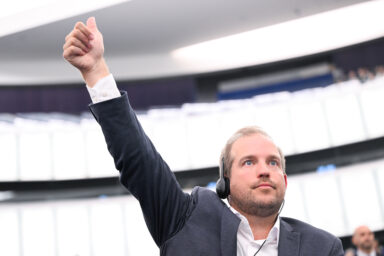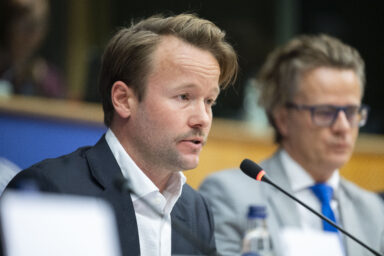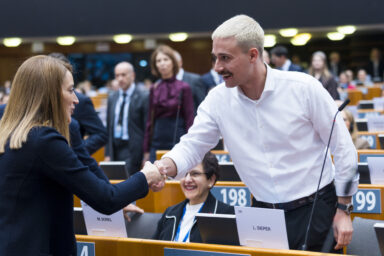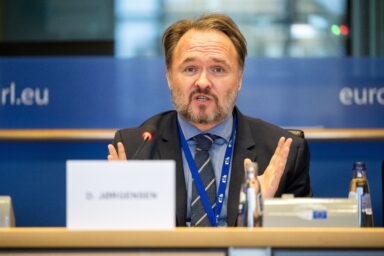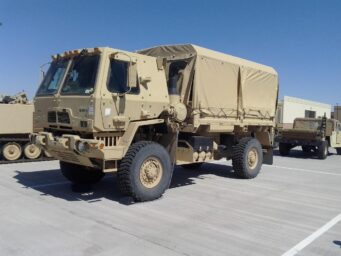Stockholm insists the European Commission’s Roadmap to Readiness 2030 remain a tool for member states rather than a blueprint imposed from Brussels. The country‘s position paper, which EU Perspectives has seen, seeks measurable results, greater competition in industry, and clearer political oversight of cooperative activity.
Sweden arrived at the Foreign Affairs Council on 15 October 2025 with a position paper that broadly mirrors the Commission’s White Paper on Readiness 2030 but shifts the emphasis. The tone is practical, and the language is short. The document accepts the need for faster procurement, joint projects on drones and air defences, and a strengthened defence industry.
Both texts start from the same diagnosis: Europe must close capability gaps after Russia’s full‑scale invasion of Ukraine. Both endorse cooperation, interoperability with NATO, and more ambitious defence investments. The Commission’s draft, as reported by Bloomberg, aims for swift structural change. It calls for coalitions of states to run flagship programmes, targets 40 per cent joint procurement by 2027, and wants projects and financing in place by 2028 to be combat‑ready by 2030. The Commission values scale and speed. Sweden accepts those goals. It questions some of the means.
Four priorities
The Swedish paper places four priorities above all. First, it demands output‑oriented metrics. “The roadmap should include clear objectives, milestones and indicators to assess whether we are on track,” it states. Sweden wants indicators that measure tangible effects—delivery times, costs, access to raw materials—rather than metrics that merely record which instruments states use. It prefers to build on existing data flows such as the CARD cycle and to avoid creating fresh reporting burdens that would sap ministries of time.
Second, Sweden emphasises member‑state leadership. “Decisions on new measures and prioritisation must firmly remain in the hands of Member States,” the paper reads. Stockholm wants the EU to enable cooperation, harmonise requirements and remove barriers. It does not want Brussels to substitute its judgment for that of national capitals. The aim is to preserve sovereignty over procurement while improving coordination through voluntary coalitions.
You might be interested
Third, Sweden pushes back against industrial concentration. The paper warns against measures that could “result in monopolies or an overreliance on a few large champions.” It calls for a competitive, innovative European Defence Technological and Industrial Base (EDTIB). That means support for SMEs and midcaps, simpler cross‑border regulation, mutual recognition of equipment and active measures to prevent single points of failure in supply chains. Competition, the paper argues, spurs innovation and resilience.
Long-term engagement for Kyiv
Fourth, Sweden insists on practical, long‑term support for Ukraine. It wants Ukraine integrated into the defence industrial base and included in capability projects. It asks for clear indicators to measure progress. It also raises the contentious matter of immobilised assets, proposing their use to support Ukraine “in line with EU and international law.” The phrasing seeks legal clarity for pragmatic measures while signalling a readiness to explore unconventional avenues of support.
Where the Commission’s plan seeks central levers, Sweden prescribes constraints. The Commission’s flagship model concentrates demand to create scale. That model speeds development but risks concentrating market power. Sweden fears that concentration could reduce competition, hinder innovation and leave Europe dependent on a few suppliers. Its remedy is to couple cooperation with rules that preserve plurality and contestability.
Sweden also believes it is important to go further on the issue on immobilised assets, in line with EU and international law. — Sweden’s position paper on Roadmap to Readiness 2030
On governance, Sweden wants the European Defence Agency to do more as a facilitator. It proposes that the EDA’s steering board exercise political oversight of projects. The paper points to the EDA’s government‑to‑government platform and expert groups as the appropriate forum for defining and executing joint projects. The suggestion is not for an EU ministry of defence but for a stronger coordinator that respects national prerogatives.
Beware of rigidity
On timetables and metrics, the two approaches also part company. The Commission sets aggressive deadlines and new quantitative targets for joint procurement. Sweden welcomes ambition but warns that rigid timetables can produce bureaucratic box‑ticking. It prefers adaptable milestones that measure effects rather than inputs. Ministers should meet regularly in the Council and European Council to steer implementation and adjust course when necessary.
The industrial measures Sweden proposes are meant to be enabling and bottom‑up. The paper calls for simplifying procurement rules, facilitating cross‑border production, and supporting start‑ups and small firms. It wants mutual recognition of products to shorten time to market. It argues that supporting a distributed industrial base will mobilise more capacity faster than concentrating orders in a handful of large programmes.
Tomorrow, we will propose clear objectives and milestones to close capability gaps, accelerate defence investments across member states. — Commission spokesman Thomas Regnier
On Ukraine, Sweden adds specifics that the Commission frames more generally. It stresses industrial cooperation, military mobility and integration into the EDTIB. It wants coordinated exchanges of lessons from bilateral support and EDA assistance in managing cooperation initiatives. The proposal to use immobilised assets is both tactical and legal; it aims to convert dormant resources into operational aid without breaching legal norms. „Sweden also believes it is important to go further on the issue on immobilised assets, in line with EU and international law,“ the Stockholm document reads.
Ends converge, means less so
The contrast between Sweden and the Commission is less about ends than means. Both seek quicker rearmament, better industrial output and durable support for Ukraine. They diverge on how to balance speed with sovereignty, scale with competition, and central planning with member‑state initiative. Sweden’s paper reads like a manual for ministers who must purchase materiel, build supply chains and keep factories open while avoiding structural risks.
The debate ahead will test whether Europe can knit together rapid procurement with dispersed industrial sovereignty. The Commission will emphasise pooled demand and flagship projects to guarantee volume and interoperability. The plan, which is still subject to change, will be presented on Thursday before leaders discuss it next week at a summit in Brussels. “Tomorrow, we will propose clear objectives and milestones to close capability gaps, accelerate defence investments across member states,” commission spokesperson Thomas Regnier said in a statement.
Sweden will press for safeguards—output metrics, political oversight by member states, competition policy and agile governance—to keep the market healthy and the state in control. If Brussels can offer scale while protecting competition and national prerogatives, the roadmap may win broad backing. If it cannot, the result will be more paper than product—and that is the risk both documents seek to avoid.

